|
|
|
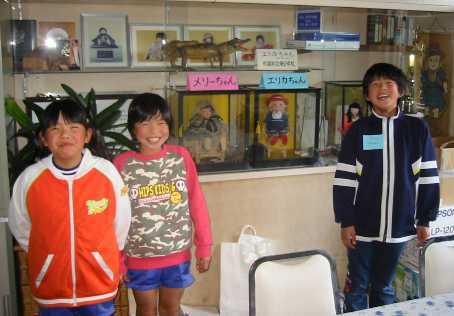
|

|
Azuma Students with School's Two
Dolls
|
|
|
The 70 students of Azuma Elementary School live in the scenic village of
Tone (population of 5,400), surrounded by mountains. During the morning
before my visit to the school, I took a long walk along the river that runs
through the town and visited the famous Fukiware Falls, a designated natural
monument of Japan. The village displayed an abundance of agricultural
products, including orchards with large apples ready to be picked.
|
|
|
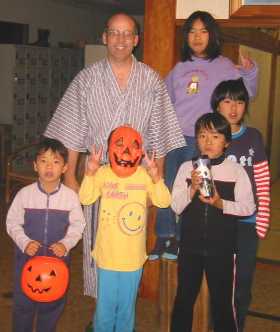
|
|
|
With Children at Inn
|

|
|
|
Only two buses travel each day from the nearest
train stop to this remote village, and the trip takes over an hour. When I
reached the inn in Tone Village on the day before my visit to Azuma Elementary
School, I enjoyed a relaxing time in the inn's open-air bath. The couple who
run the inn has three children who are students at Azuma Elementary, and two
more of their friends came to visit in the evening, so we all talked together
for about an hour. The two boys enjoyed playing with the Halloween pumpkin mask
I had brought with me, and one of the girls remarked how nice it would be to
get lots of candy on Halloween if she were in America.
|
|
|
|
|
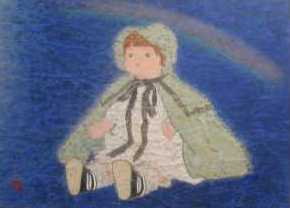
|

|
Painting of Mary
|
|
|
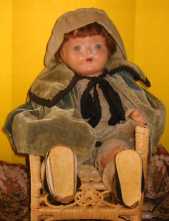 The
Blue-eyed Doll named Mary at Azuma Elementary School is famous throughout
Japan because a national television program in 1973 covered the story of the
finding of this doll sent as a gift from America in 1927. After this TV
program aired in 1973, many other schools throughout Japan came forward to
announce that they also had a Friendship Doll from 1927 that had survived
World War II when the Japanese government ordered the dolls to be destroyed.
The principal's office at the school had several articles on display about
the doll, and the school also has a New Blue-eyed Doll named Erika, a 1987
gift of Sidney Gulick, 3d, the grandson of the American missionary who
originated the plan to send dolls to Japan in 1927. All of the students in the
small school seemed familiar with the two dolls. The principal gave me a copy
of a short children's story about Mary that was written by Eiko Takeda, a
Japanese children's author who has published many books about the Friendship
Dolls exchanged between the U.S. and Japan in 1927. The
Blue-eyed Doll named Mary at Azuma Elementary School is famous throughout
Japan because a national television program in 1973 covered the story of the
finding of this doll sent as a gift from America in 1927. After this TV
program aired in 1973, many other schools throughout Japan came forward to
announce that they also had a Friendship Doll from 1927 that had survived
World War II when the Japanese government ordered the dolls to be destroyed.
The principal's office at the school had several articles on display about
the doll, and the school also has a New Blue-eyed Doll named Erika, a 1987
gift of Sidney Gulick, 3d, the grandson of the American missionary who
originated the plan to send dolls to Japan in 1927. All of the students in the
small school seemed familiar with the two dolls. The principal gave me a copy
of a short children's story about Mary that was written by Eiko Takeda, a
Japanese children's author who has published many books about the Friendship
Dolls exchanged between the U.S. and Japan in 1927.
|
|
|
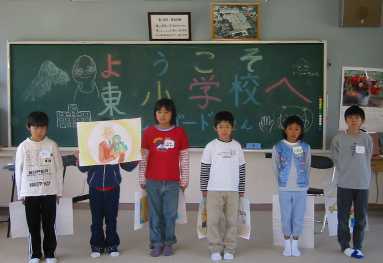
|
|
Picture-story Show of
Friendship Doll History
|

|
|
|
After lunch with the 4th graders and after the
students finished cleaning the school, I met with the 3rd-grade and 4th-grade
students in a class about the Friendship Dolls. The 3rd graders presented a
picture-story show about the history of the Friendship Dolls, where each
student held up a drawing and then read the script from the back of the poster
board. The 3rd-grade and 4th-grade classes then each sang a song. The students
had several questions for me about the Friendship Dolls, especially about what
happened to the 58 dolls sent as a gift from Japanese children to American
children in 1927.
|
|
|
|
|
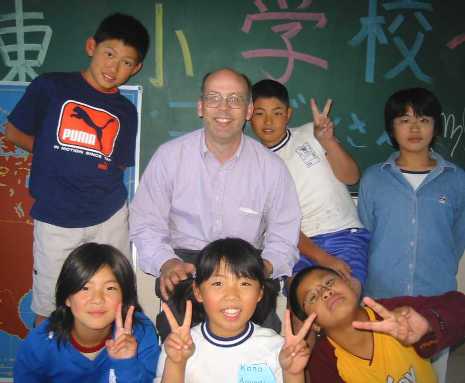
|

|
With Broadcasting Club
|
|
|
At the end of the day I was interviewed by the six
members of the Broadcasting Club. We practiced the interview before it was
actually filmed. However, the practice took more time than expected, so we had
to rush so that I could catch the last bus of the day for the train station an
hour away from Tone Village.
|
|
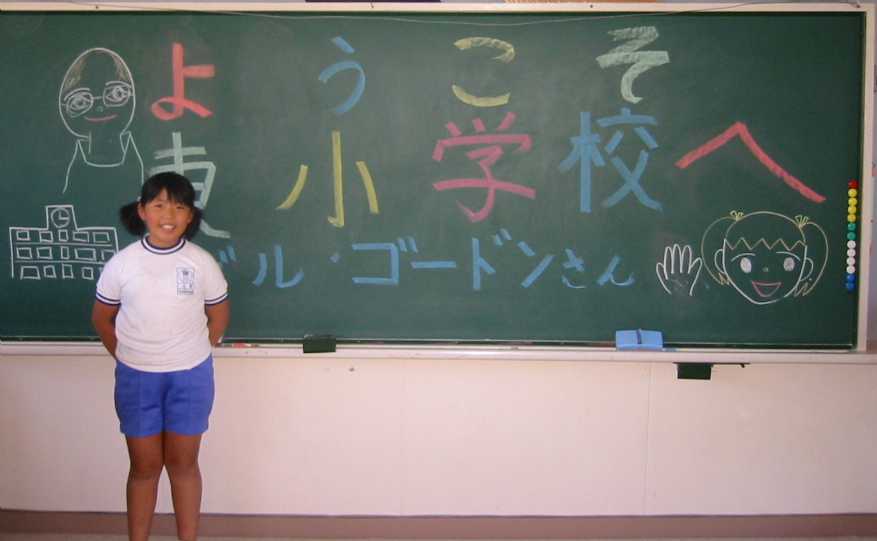
"Welcome to Azuma Elementary School, Bill
Gordon"
Girl Displays Her Artistic Talent on Blackboard
|
|
|